Climbing Mt Fuji with my 70yo mum; Our Experience
I took my mum to Japan in January 2018 for a holiday, we checked out the Snow Monkey’s in Japan (amazing by the way), went skiing in Hokkaido and explored Tokyo for a few days. We had a great time, but the biggest take-away from that trip was our new Japan plan for 2019. We had decided we were going to set about climbing Mt Fuji together for charity in July 2019, for my mum’s 70th birthday, and to raise funds for ‘Cure Parkinsons’ (We have raised over $17,000. You can help us reach $20k here).

Table of Contents
1+ Year of Training for Climbing Mt Fuji
So it was set. With my mum’s Parkinson’s disease, she had just over a year to get herself ready for the climb. The way horrible Parkinson’s disease works is that it’s a degenerative disease i.e it gets progressively worse over time. My mum would turn 70 just before our climb date, so for her to take on this challenge was so brave, and I was very proud.
Not that I was surprised with her bravery. Since being diagnosed in 2013, my mum has faced the problem head-on. She’s been using her pension to travel the world, to more than 60 countries. She sky-dived for her 65th birthday, came with me backpacking to Afghanistan, and overlanded all cross Uzbekistan, Peru, Eritrea and many other countries! Still, climbing Japan’s highest peak would be the challenge to end all challenges. The last few years though, to hopefully slow the progression of the disease, my mum has joined me in the vegetarian ranks (yaaaay!), and she has been a regular at the gym in my old home town of Kilkeel.
Many Parkinson’s sufferers, especially those who are diagnosed later in life, simply give up. They’re embarrassed by their shakes and wobbles. It’s heartbreaking and understandable, but that only makes the problem worse and speeds up the regression. I’m so happy that my mum has found the strength to fight on. And so she did. 15 months of training, the last 3 or 4 months full-on indeed. Climbing Northern Ireland’s highest mountain, and a few more in the region, quite regularly. Practising with walking poles, using the hiking boots, stair climbs. She respected the mountain, and after all the training hours she put in over the preceding year, and all the fundraising in our local area, she was ready. Japan was calling.
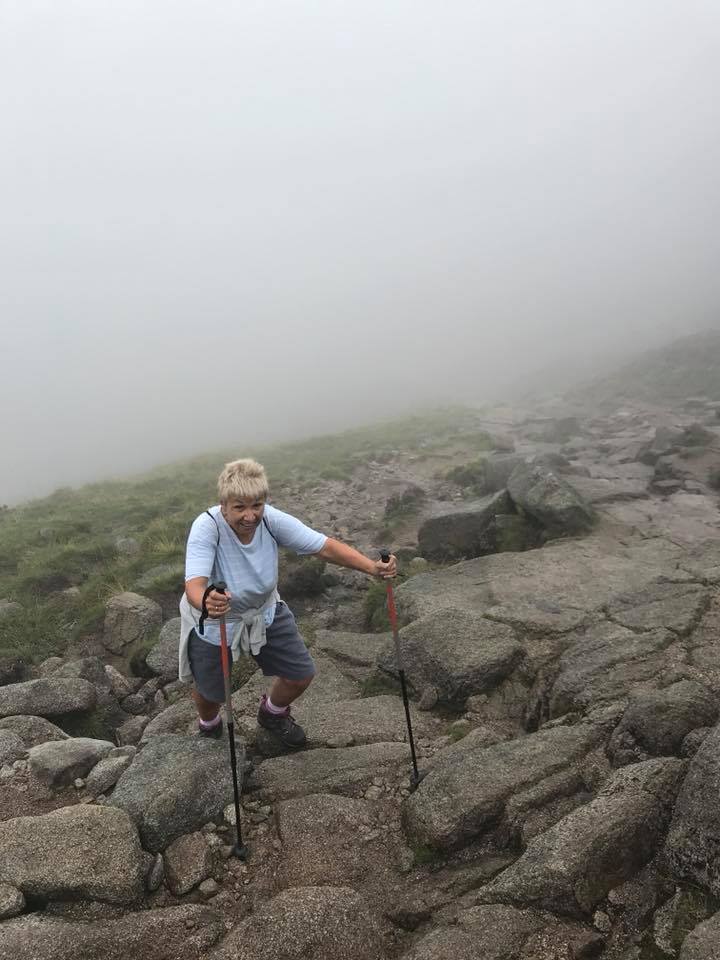
OFF TO JAPAN
Soon the time came. In the lead-up to the climb, during the fund-raising efforts, I announced here on my blog about our plans to climb Fuji for charity. Before long we had 18 people joining us for the mountain, 9 of whom were 55 years old and above. It’s was a beautiful thought, everyone training in their home countries, focussing on climbing their personal ‘Everest‘ here in Japan.
The time had arrived. So my mum flew to Bangkok to meet me first, and we then connected to Japan together, where we’d meet the other 16 people in Tokyo for a night, before heading to the cute little town of Kawaguchiko at the foot of Mount Fuji.
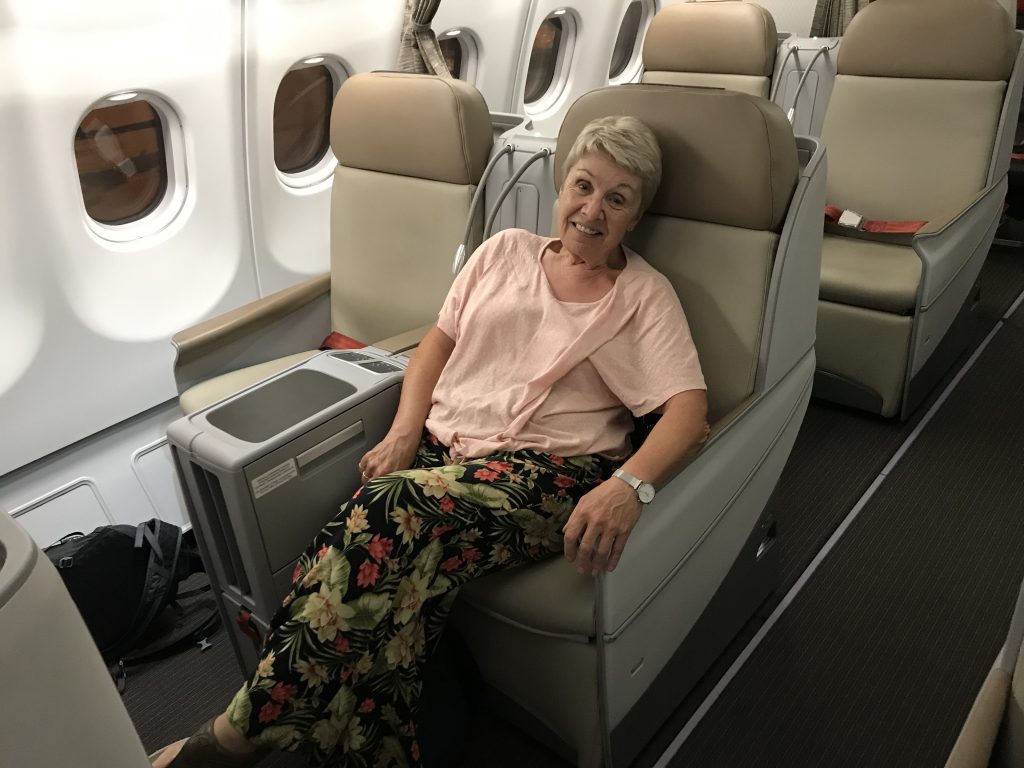
Meeting everyone was great. We had been in contact for the last 12 months or so about climbing, the right gear, the itinerary etc, so to finally meet all these heroes was beautiful. After a quick stop in Tokyo, we were at the foot of Mount Fuji. Here we did some tourist stuff for a day, and had an early night before the 2 day/1 night climb commenced. That evening you could feel the nervous tension in the group. What seemed like a fun adventure when we all agreed to do it, suddenly became a daunting prospect. Altitude, weather, fitness, injuries. Could we do it? With almost $20k raised, there was a lot riding on it. Not to mention the personal pressure. To go for success, you have to risk failure. And the risk of failure was palpable that evening.
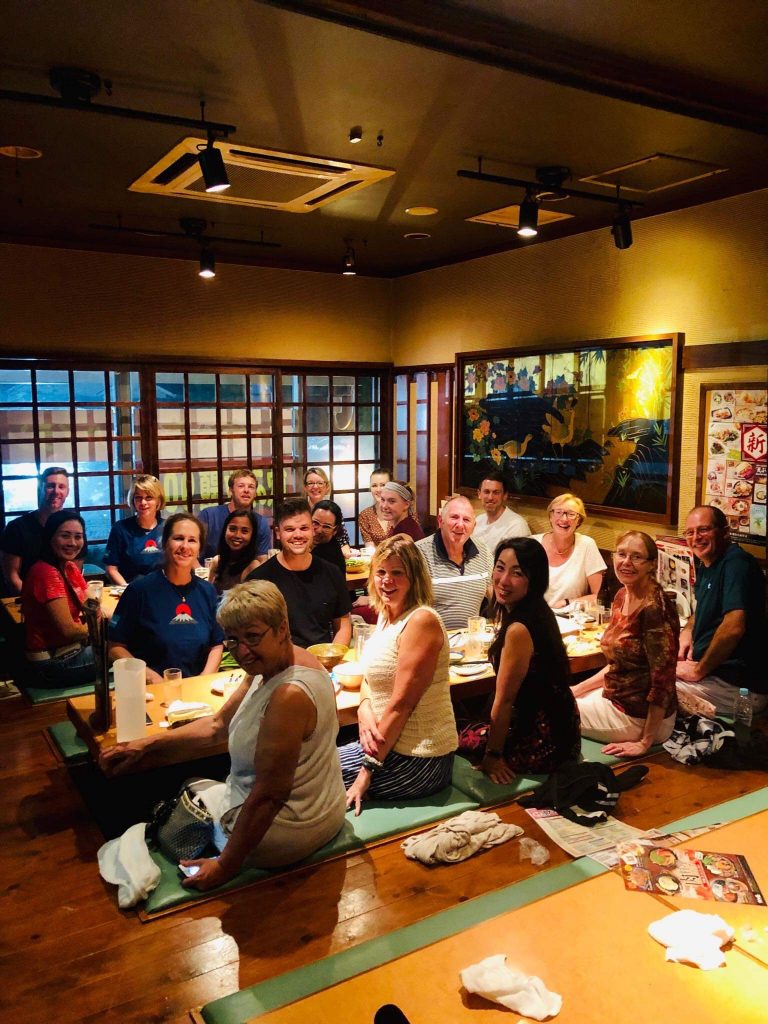
Climbing Mt Fuji: DAY 1
We woke up in Kawaguchiko, checked our climbing/hiking gear, had a very quick breakfast and we took the bus to the starting point of the trail. Climbing Mt Fuji can be quite complicated when you start planning but don’t worry I explain it all HERE. For our group, we were taking the most popular route, the Yoshida Trail. The bus stops at the starting point for the trek, at the Fuji-Subaru Line 5th Station. Here the altitude was 2,300 (7,500 feet). The summit of Mount Fuji is 3,776 metres (12,389 feet), so we have about 1500m of vertical distance to cover.
Our plan was to make an early start to the hike and to try to reach our mountain hut on the 8th station before dinner. Then we’d sleep in the mountain hut, and start at 4am or so on Day 2 to try to reach the summit, or near the summit, ideally around sun-rise (around 6.15am), that may be a rush but it wasn’t so serious if we missed it. Getting to the top was the only priority, not the timeframe!
For the younger among our group and other Fuji climbers, it takes the average person between 5 and 7 hours when climbing Mt Fuji from the Subaru 5th Station to the summit via the Yoshida Trail (3.5-5 hours to the hut, then another 1.5-2 hours to the summit in the morning), and then another 3 to 5 hours to descend. We reached the 5th station around 10am, and after a pit-stop and coffee break, we got going at 11am. Sunset was around 6.30pm, which gave us 7 hours or so to reach the hut. And besides, if we were late, we’d skip dinner, we just had to make it that far. Focused.
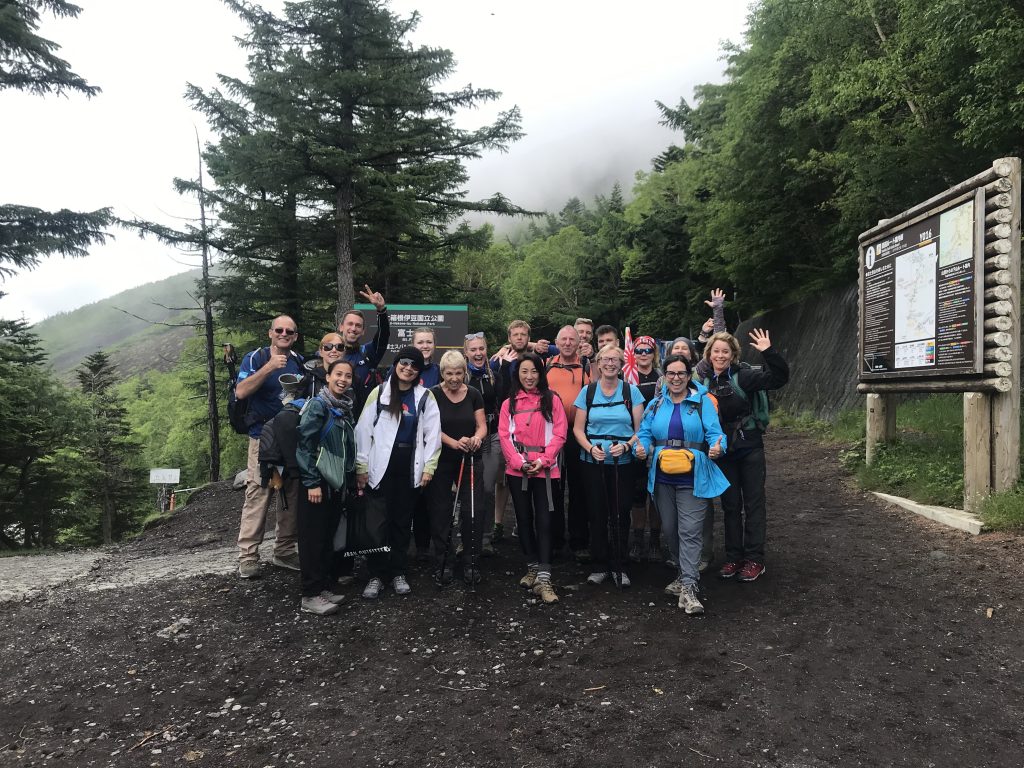
Thoughts about altitude sickness
And we were off. Most of the group were a little ahead of us while my mum and I held back, pacing ourselves. Actually, my mum had been in La Paz, Bolivia last year on her travels, the altitude there was 3000m+ and she was almost hospitalised with altitude sickness and had to leave urgently. As we started our Fuji climb, the experience from last year was playing on her mind for sure, and she could feel the shortness of breath immediately, as we set off at 2,300m.
My mum had trained hard, there was no doubt about that. But within that first hour, I could see her struggling. I was really worried that we had bitten off more than we could chew with this thing. She was struggling to go more than 10m or 15m without taking a break to breathe. Each time she stopped, I could see in her face not only anguish but fear about last year’s altitude sickness, and for the first time, thoughts that she may not be able to do this thing. It was awful to see.
The way Mount Fuji Trails work is you start at the ‘5th station’, where you can drive to. You start hiking from there, past the 6th, 7th, 8th (where we would sleep), 9th station and then the summit. The 6th,7th,8th, and 9th, stations are nothing more than a little smattering of mountain huts. Places where you can take a seat, get a hot tea, and at the 8th station, a place to lay down and sleep.
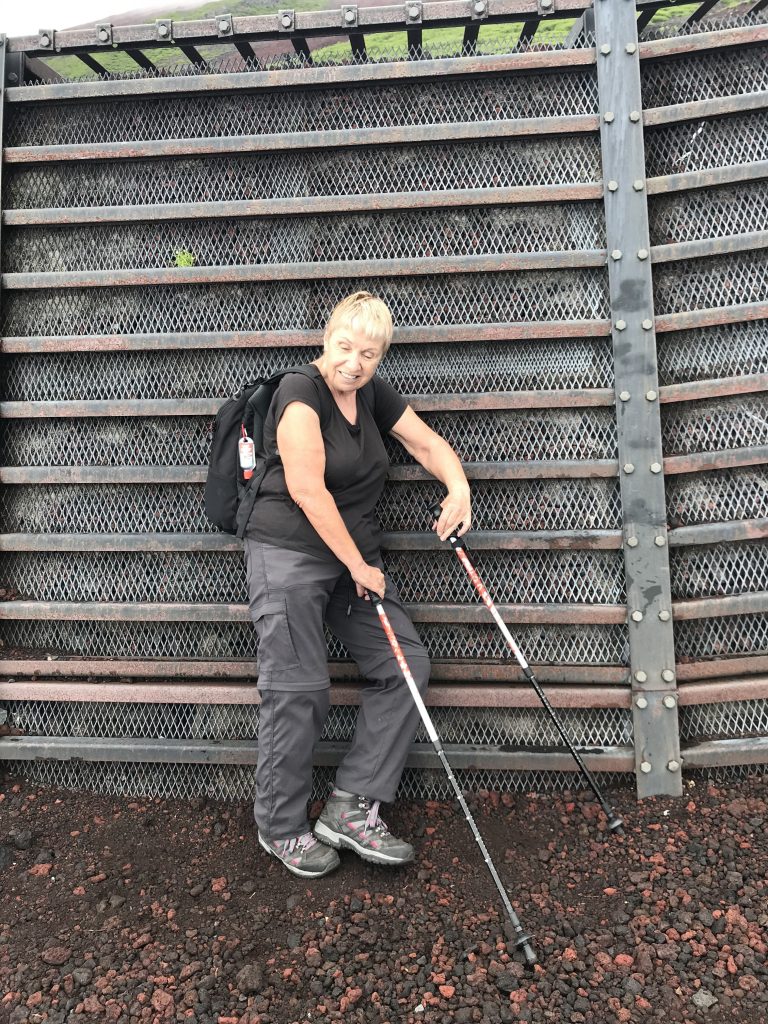
Day 1 should be a case of starting at the 5th station, then reach the 6th for a check-point, then the 7th, and then at the 8th we would settle for the night and get dinner. We’d meed the rest of the group and share war stories from the day. But 500m from the starting point, this wasn’t looking likely. My mum seemed to have hit a wall right after starting.
“Are you ok mum?”.
“Just a little short of breath sweetheart”.
We looked at each other, saying nothing. But both knowing things weren’t going well. But with little choice other than to plod on, we did just that. Walk a minute or 2, break. Another minute or 2, break. Fortunately, after an hour or so, my mum seemed to be gathering a bit of pace. The breaks were less frequent and it felt like we were making progress. We were still in the tree line, not on the volcanic surface yet, but each step was a step closer.
Not a great start
After about 2 hours we made it to the first check-point, station 6. Things were improving, or so I thought. It was here my mum sat down for a break and asked could we open one of the 2 oxygen canisters we had bought at the start-point. We had bought this kind-of as an emergency, but with a plan to use them as we climbed in altitude. Probably tomorrow morning, or perhaps this evening when we reach the 8th station for dinner. To be using oxygen already was worrying, but I know my mum is a fighter so I pretended that everything was fine, took a 10-minute break with her and we were off.
The next 3 hours or so were great! We went from the 6th station to the 7th station slow but steady. The path during this stage is very forgiving. A long zig-zag up the mountain. I wasn’t expecting it to be so solid and flat underfoot and my mum was going from strength to strength. We were laughing and joking all the way during those few hours.
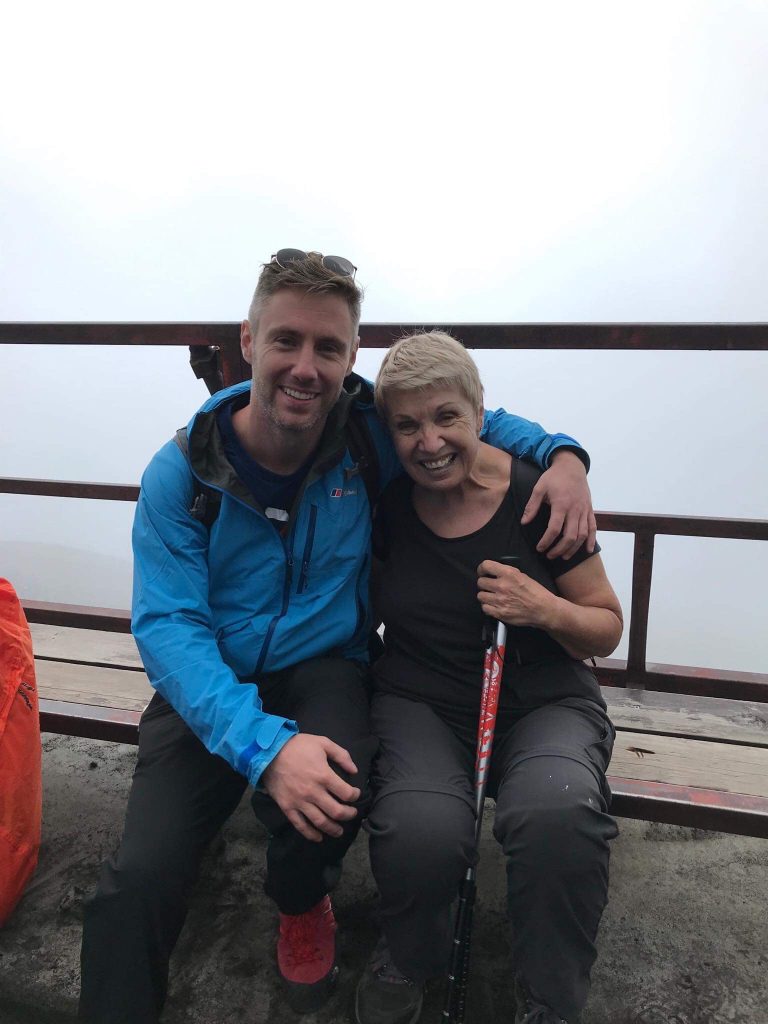
Finally, some confidence. We were both feeling good about my mum’s prospects. After a shaky start (no pun intended mum!) we had spent the last 2 or 3 hours really motoring. Sure it was steep, and sure, it was a slog. But we were really getting there. The weather was overcast, and a little rainy, but if anything that was helpful as it kept the temperature down, and it beats the hell out of sunburn! Next up, Station 6 to Station 7.
After a break at station 6, and a bite to eat. We were almost ready to go. Eating when you’re on a strenuous trek is so important, but when you’re super tired, and when you’re under the influence of altitude, your appetite goes out the window. But after forcing down an energy bar or two, we were off.
The terrain this time around started ok again. More zigzags. But we had now left the tree-line. This was very much volcano territory. As we progressed, the gradient was getting steeper and steeper. The rocks underfoot were getting bigger and my mum’s fitness was getting tested. All those long days back in Ireland, the lonely slogs, they were paying off and she was doing so well. One foot in front of the other. No rush. Just keep going. And so she did, onwards and upwards.
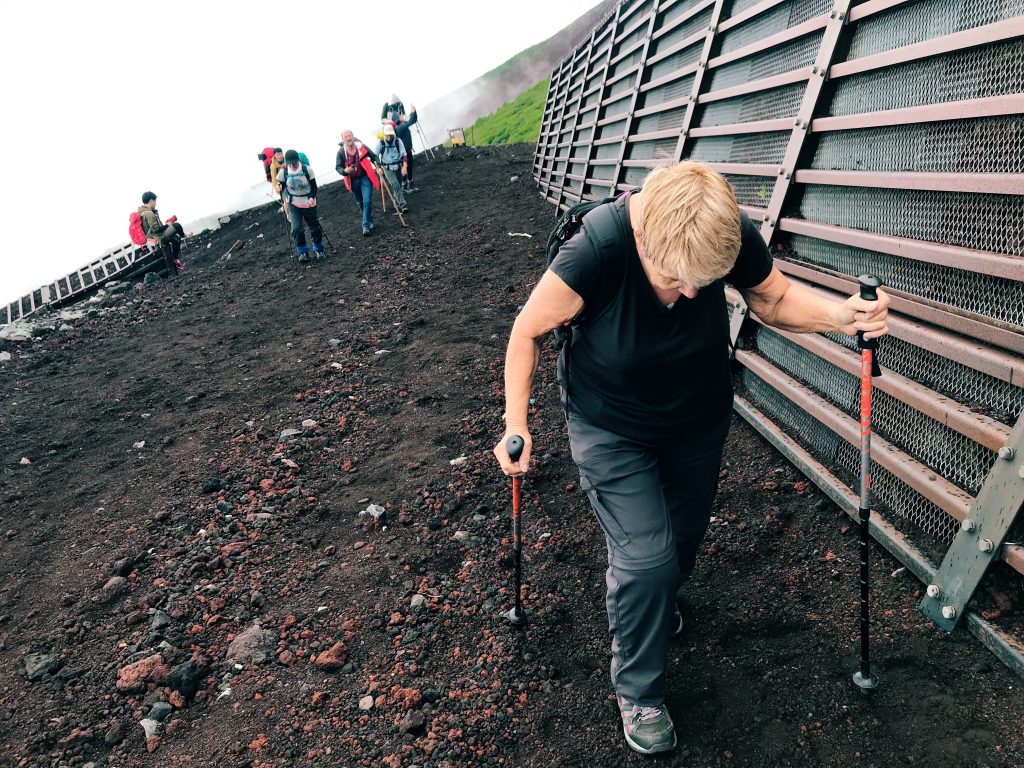
Scrambling on hands and knees
We had been going for 5 or 6 hours by the time we reached station 7. I was so happy for my mum. Just 1 more station today and we’d reach our goal. At the 8th station, we had a mountain hut reserved. Hot dinner, a place to sit down and recharge. Even the chance for a few hours sleep before the summit attempt early tomorrow morning.
When we sat down for a break at station 7 though, I could notice a difference in my mum. She wasn’t interested in eating at all, even though all we had eaten was one energy bar since breakfast, despite 5 or 6 hours hard hiking. Even more worryingly, her Parkinson’s shakes and wobbles were more prominent. And the colour had left her face. I knew she was hurting, but she was on a mission. Up to now, although the hike was starting to take its toll, the terrain had been favourable. So we figured, just one more station, you can do it, mum. And on we went.
Station 7 to Station 8 though, that was something else. The zig-zags were no longer. The flat terrain was long gone. We were into scrambling territory, portions of which were hands and knees. With my mum’s Parkinson’s, she struggles with flexibility, especially with her right leg. So some points, in particular, were really challenging as she had to reach and push upwards, to avoid falling back. As soon as we left the last hut at station 7, we were faced with the real challenge that lay ahead. Despite being more tired, and the Parkinson’s, therefore, getting worse in line with mum’s fatigue, the terrain would become even more unforgiving.
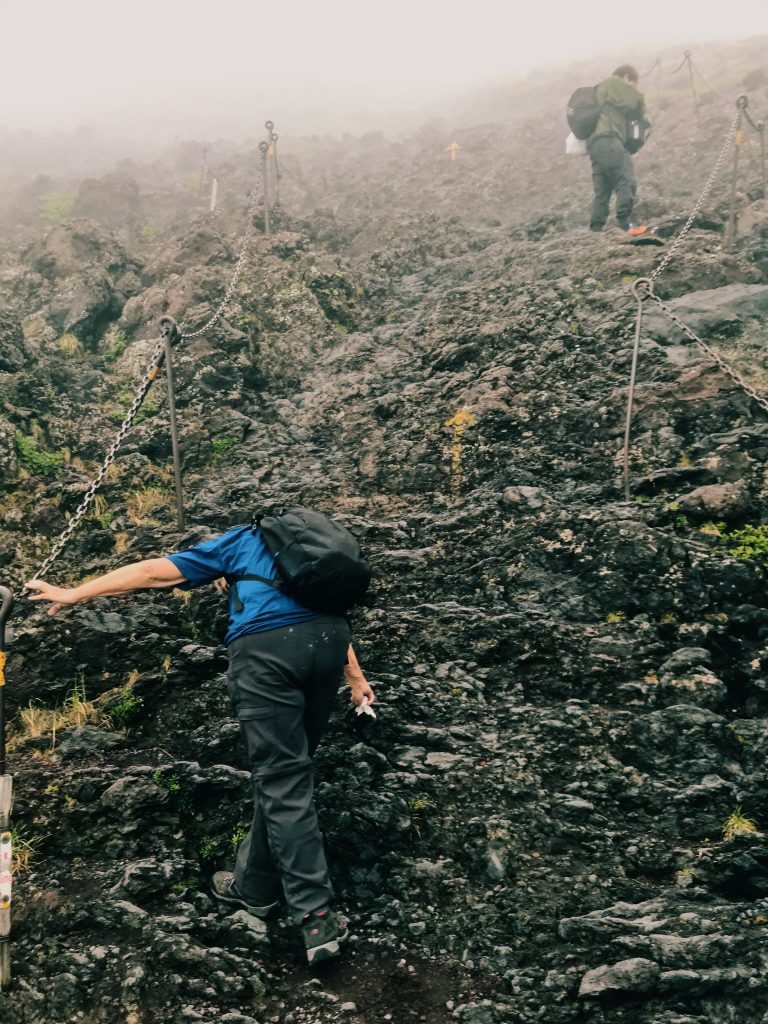
I don’t know what to say other than the next 2 hours were tough. Really tough. The cliff faces almost appeared sheer by this point. And most people had reached the sleeping-hut earlier in the day, so my mum and I were virtually alone on the mountain. The weather was getting worse and worse but we had no way to go but up. And so we did. She did. It tooks us almost 3 hours from Station 7 to Station 8. But soon we could see the hut in the distance. No matter what happened, my mum would make it that far. But she was painfully breathless. Painfully tired. Struggling even to stand up with her shoulders back to take a deep breath.
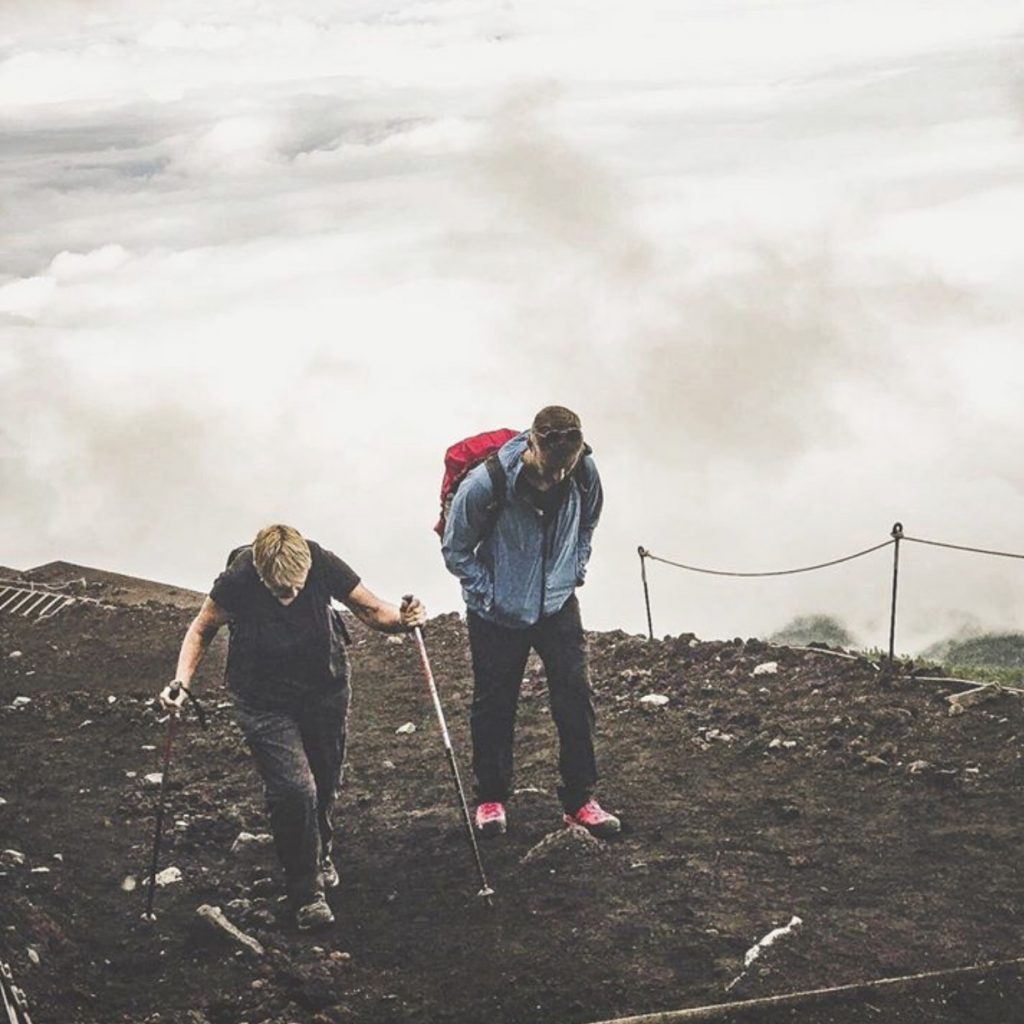
By the time the word had reached our group of 18 that my mum was approaching the mountain hut, they had formed a kind-of guard of honour. My mum isn’t one for being the centre of attention, and she was shattered! But the warmth and support of the group was beautiful, and as they counted the last 20 steps of one of the hardest days of my mum’s life, she broke down into tears. She had made it through day 1. Well done mum. You did it.
Dinner. Hot tea. Try to get some rest. Wake up call is 4am. You earned a break. Try to recover. I love you. Tomorrow we’re doing it all again.
Climbing Mt Fuji; DAY 2
Our goal today was just to make it to the top. Sunrise, sure, an outside bet. But all eyes on the prize, and that’s the summit. The sleeping huts when you’re climbing Mt Fuji are a rite of passage. Cute, endearing and soaked in Japanese culture. You sit on the floor to have dinner and hot tea. You sleep on mats alongside the rest of your fellow climbers, and you must remain quite quiet throughout your stay. As I mentioned, you ‘can’ climb Fuji in a day (if you’re super fit) but to do it over 2 days, and stay in a mountain hut is much preferable, and a great experience on your Japanese trip.
For my mum though, that was the last thing on her mind. After a gruelling day, she recovered well in the mountain hut. Within an hour she was in good spirits, and we chatted with a few of our group before trying to get our heads down around 9pm. With a 3.45am wake-up, our bodies needed some rest before the summit attempt.
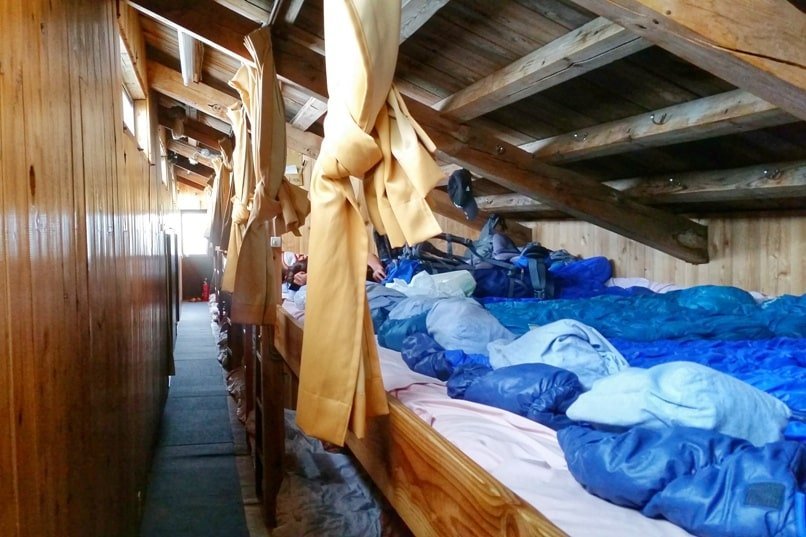
We were awake long before the alarms, the shared dormitories mean that the early risers, regardless of how quiet they try to be, awake the rest of the group. With that, my mum and I were downstairs with our bags before 4am. Breakfast was spartan, so we forced down a few energy bars and some water. My mum took a Diamox pill to help with the altitude and all seemed quite well. A lot of our group were up ready for the assault on the summit, while the younger, stronger members slept another 45 minutes or so, knowing their summit attempt would be a bit faster.
Head-torch. Check. Warm layers. Check. Ready to suffer mum? Check. We were off.
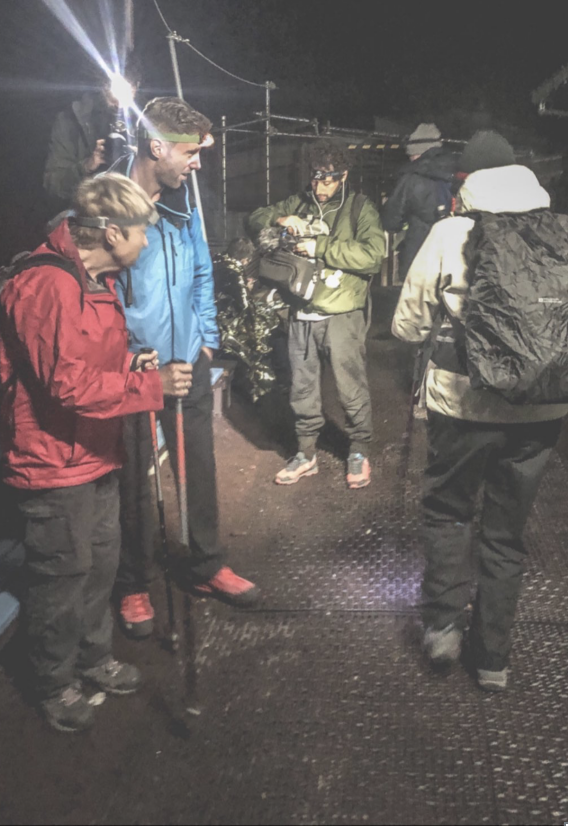
Climbing Mt Fuji in the Dark
It’s difficult to talk about the next 9 hours to be perfectly honest. My mum is the person I love the most in the world. Someone who has demonstrated true love and selflessness my whole life. Someone who has never judged and always supported me. And I had ‘made’ her do this crazy thing, I felt (and still feel) guilty about creating an experience that caused her to suffer, but proud that it created a platform for her to show how amazing she is. Conflicting indeed. So yeah, Day 1 was tough, sure. Tears, and struggles, but we did it. Day 2 however, was equally pride-inducing yet traumatic. Looking at my photos now, after leaving the hut at 4am time, I didn’t take one single photo until we reached the summit. That says a lot about the experience and the struggles we had.
It was dark at 4am, but the ascent on Day 2 is much different from Day 1. The terrain is much more volcanic, much rockier and unstable underfoot. The gradient is considerably steeper too, and there are very few passages of respite, flat enough to feel like you’re having a break. Add that to the fact that each step you take, is a step higher into altitude, and it’s a tough journey. At 70. With Parkinson’s.
The first hour or so, while we waited for dawn to break, wasn’t too bad. Sure, it was difficult, but spirits were relatively high. When the going got tough, my mum and I could reflect on yesterday, and understand that although that was hard, she had made it! And today, we hoped for more of the same. Leaning on yesterday’s experience to drag us through the rough times. That worked for about 90 minutes. Sunset was due 2 hours or so from when we set off, I know my mum secretly hoped we would be ‘near’ the summit by that time, but it wasn’t too be. Her knees had swollen a lot from yesterdays exertions, and she was in discomfort and pain. Worse still, and so so difficult for me to see, was how her Parkinson’s had worsened.
Amongst the many side effects of Parkinson’s, are a tendency to shuffle instead of walk. The muscles being less able to react to messages from the brain, not doing what they’re told. And more famously of course, the shaking, and waving of the body. My mum had fought these symptoms so well over the last 7 years, but almost instantly they had become 200% worse. My mum was swaying from side to side, her arms were shaking, she had no confidence in her stride. It was horrible to see. And I was terrified that they changes would be irreversible.
But what did she do? She put one foot in front of the other. One walking pole at a time. And she moved forward. And upward. For hours. Hours upon hours. Sometimes the rocks were so steep that she’d be scrambling on all fours. But she kept it up. I had bought 3 more oxygen canisters at our mountain hut. Hoping to use them as we got higher, but within 2 hours, 2 of them had been used up. I was worried we couldn’t get any more and we were still hours from the summit.
And so we proceed. 8th station finally became the 9th. We were now at 3,350m (11,000 feet). The sun was finally rising, we had been on the go for around 2 hours and the scenery was beautiful. Selim, a close friend of mine, captured the most beautiful photo of me and my mum here. And after a tough couple of hours, my mum believed again that she could do it. She had come so far.
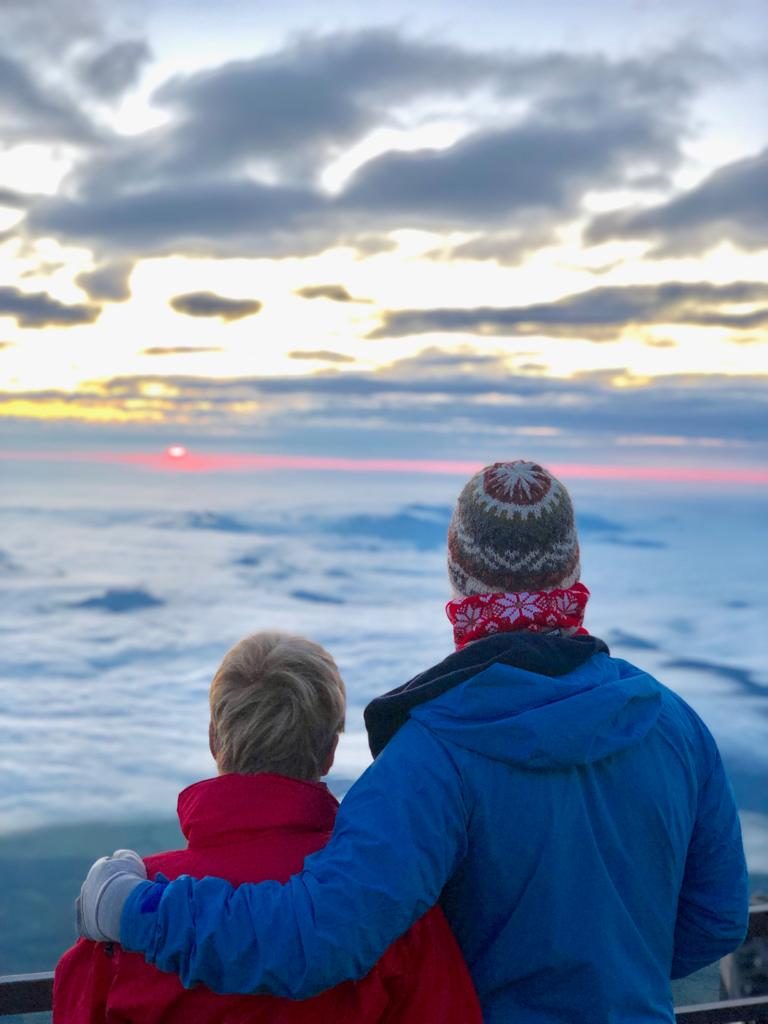
We stopped for a coffee, took a minute or 2 to appreciate the spectacular views, above the clouds. Reflect just a little on how far she had come, but we had to keep moving on. The worst was yet to come.
For one hour, it was great again. 6am to 7am, my mum was flying. Refreshed by the sunrise, and the progress. We were doing it. The sun was warming our backs, the views finally allowed us to see the summit. We were really going to do it. Keep it up mum, you’re amazing! And then the altitude sickness hit. From 7am to 10am, 3 arduous hours. Hours, where I’m ashamed to say, I doubted if we’d make it. I feel like I should have supported my mum more during these 3 hours.
Sure, physically I was there, holding her hand every step. But looking back, I wish I was more motivational vocally too. I was scared. Scared for her health, scared for the pressure I knew she felt to reach the summit, and scared about the prospect of failing, and how it would crush her. If I could go back, I’d have helped even more. Live and learn.
Gasping For Air
Those were 3 of the toughest hours of my life. Especially in the last 20 minutes. My mum was gasping for breath so badly, her Parkinson’s meant every step seemed like a gamble of whether she would stay on her feet. 2 steps and a break. 2 steps and a break. And we had run out of oxygen. The 3rd canister used up long ago. The finish line was literally in sight, but she was on her last legs. Barely able to talk. My mum hates to impose herself on others, but she asked me to go to the top and buy more oxygen and bring it back down to her. “You’ll be fine mum” I replied (eurgh, I hate that I said that).
When she asked a second time, I knew it was serious, so off I went. 10 minutes later I was back and she emptied the canister in no time. The last 200 steps were torture for her. Bent over at 90 degrees at her hips, one or two steps, then leaning on her poles, ready to collapse. Each step was a marathon. Her face had lost all colour, lips blue, unable to chat, shallow breath. But still, she persevered. One step forward, break. And another. You CAN do it, mum, you ARE doing it. Amazing.
Reaching The Summit
We rested at the plateau for 30 minutes, where my mum tried to gather her thoughts. 3 postcards were sent to my sister and my mum’s 2 grandkids. Normally messages full of love would be sent, this time? “Made it!”. The effort to write that was almost too much. And the last 15-minute hike, on a shallow gradient, thank God, until the actual summit. My mum did it. She had reached Japan’s highest point. The summit of Mount Fuji. All that money raised, all those months of training, and a massive “F*ck you” to Parkinson’s, and age, alongside. We were delighted to share the summit with a wonderful Irish couple, John and Heather, along with our Filipino friends Selpha and Sarah. We might have been 4 hours late, but we made it. 10am, with all of Japan beneath us. I have literally never been prouder.
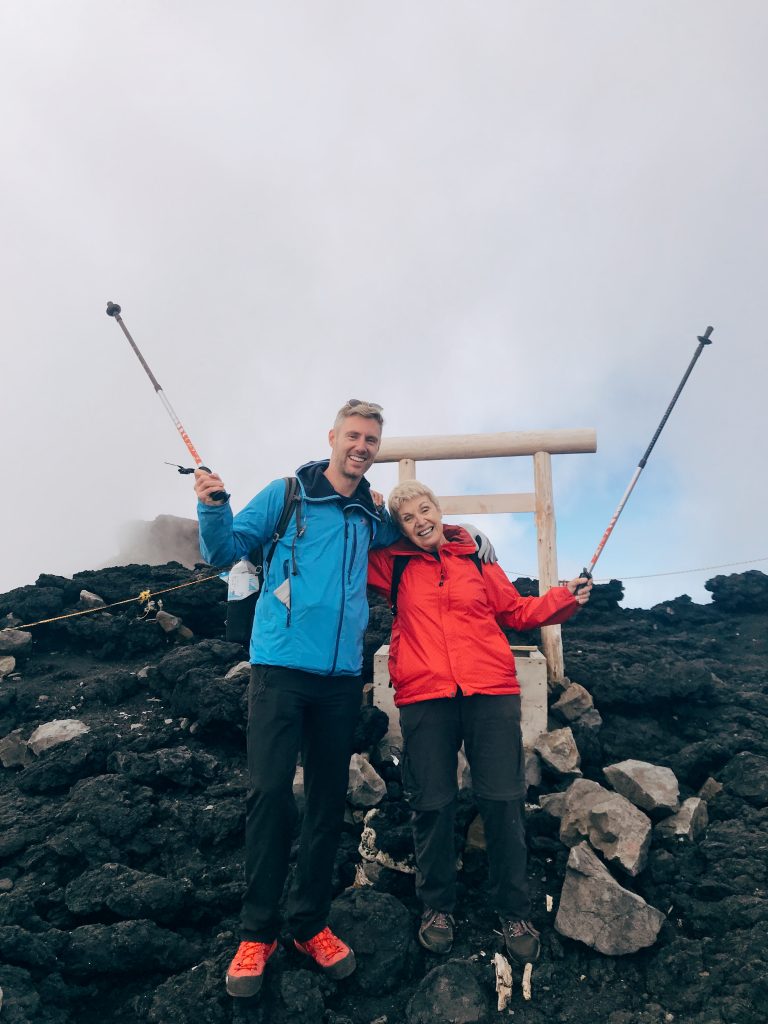
We spent 20 minutes at the summit. Trying to enjoy the achievement. A proud moment for everyone no doubt, but lifting the walking pole for the photo was almost a task too far for my mum by this stage. You can see from the photo how knackered my mum is. Stupidly, I thought the worst of it was over though.
And so the descent began. Normally 3-5 hours is standard for the descent, but I knew we were looking at much longer. My mum had given EVERYTHING to reach the summit, everything. Considering the normal ascent time is 6 hours in total, my mum had fought through 7 hours on day 1, and another 6 hours today, so 13 hours in total. That means we were facing a 9 or 10-hour descent. It was around 11 am when we started our long way down, so it would be around 8 pm, in darkness, by the time we would get back. Deep breath. We can do this mum. We have no other option.
And so the 6 of us began to descend, the 2 Filipinos and our Irish friends. Within 10 minutes or so, I could see my mum was in real trouble. Simply walking downhill was tough. She was struggling to stay on her feet. I suggested to the other 4 that they go on down, we’d be a bit slower but we’d see them at the hotel that night, and on they went. 15 minutes later, my mum was on the ground. She couldn’t stand up, her legs beneath her gone completely. Struggling to breathe, white as a ghost aside from her blue lips. Right at that moment, the weather turned. The fog moved in, and visibility was instantly reduced to 5 metres. I was genuinely scared.
GETTING HOSPITALISED
Ok, this is serious. I need to call for help. Check my phone. No signal. Like a movie. So there we were, on the side of Mount Fuji, no visibility, no-one around us, no phone signal and my mum couldn’t stand or speak, she could barely breathe. What were we to do?! Out of the fog, a Japanese man appeared. I called him over, despite the language barrier, it was quite obvious we were in distress. Fast forward 1 hour, and we are in an agricultural vehicle, taking us down the mountain. My mum lying down, barely able to sit up. But as we descended, and the air was more oxygenated, and she came back around a little and could talk coherently again. Wow, that was scary.
We felt a little guilty overtaking all the people on their descent. But within an hour we were at the bottom of the mountain, where an ambulance took my mum and I to the hospital to check her blood-oxygen levels and make sure she was ok. After another hour or laughing and joking with the doctors, my mum was back to normal (whatever that means!). Her oxygen levels were, of course, low, but she wouldn’t need to stay in hospital. We were back at the hotel in time for dinner, where we would share our war stories with our friends in the group. She did it.
My Mum Is My Hero
I think you never know if you’re a hero. You never know if you can truly dig deep until you have the opportunity to push yourself. Do you have what it takes to give everything to achieve your goals? We love, revere respect athletes, adventurers, explorers because we see them push themselves, and risk it all. But it’s rare for normal people to have the chance to put themselves to the test.
To see if they ‘have it’. I always knew my mum was special. The love she has for others, the efforts she makes for other people, but this was different. I can only say that I love and respect her even more now. More than I thought was possible, to see how much effort she put into this. This was her Everest, and she did it. It was touch and go, but then again all the best adventures are, aren’t they?
So well done mum, you were my hero before but this has changed that thought. It makes me think back to a silly ‘Supermum’ Christmas card I bought you all those years ago. You know those ones with a middle-aged cartoon woman wearing a superman costume underneath her apron? It was cute, and kitsch. And loving too, but just a meaningless, generic Christmas card from a son to a mother. Except it isn’t meaningless, or generic, not by a long shot. You are supermum. Thank you for everything. And congratulations. If I can be half the parent, half the person, I can consider my life a success. Thanks for everything xx.
Remember, never travel without travel insurance! And never overpay for travel insurance!
I use HeyMondo. You get INSTANT quotes. Super cheap, they actually pay out, AND they cover almost everywhere, where most insurance companies don't (even places like Central African Republic etc!). You can sign-up here. PS You even get 5% off if you use MY LINK! You can even sign up if you're already overseas and traveling, pretty cool.
Also, if you want to start a blog...I CAN HELP YOU!
Also, if you want to start a blog, and start to change your life, I'd love to help you! Email me on johnny@onestep4ward.com. In the meantime, check out my super easy blog post on how to start a travel blog in under 30 minutes, here! And if you just want to get cracking, use BlueHost at a discount, through me.
Also, (if you're like me, and awful with tech-stuff) email me and my team can get a blog up and running for you, designed and everything, for $699 - email johnny@onestep4ward.com to get started.
Do you work remotely? Are you a digital nomad/blogger etc? You need to be insured too.
I use SafetyWing for my digital nomad insurance. It covers me while I live overseas. It's just $10 a week, and it's amazing! No upfront fees, you just pay week by week, and you can sign up just for a week if you want, then switch it off and on whenever. You can read my review here, and you can sign-up here!





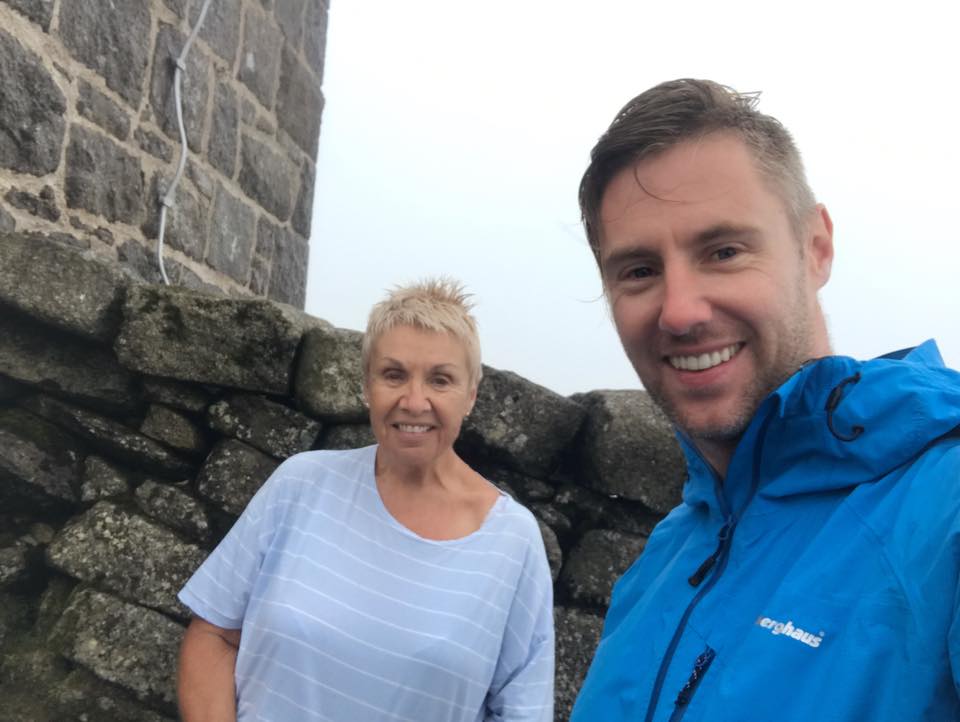
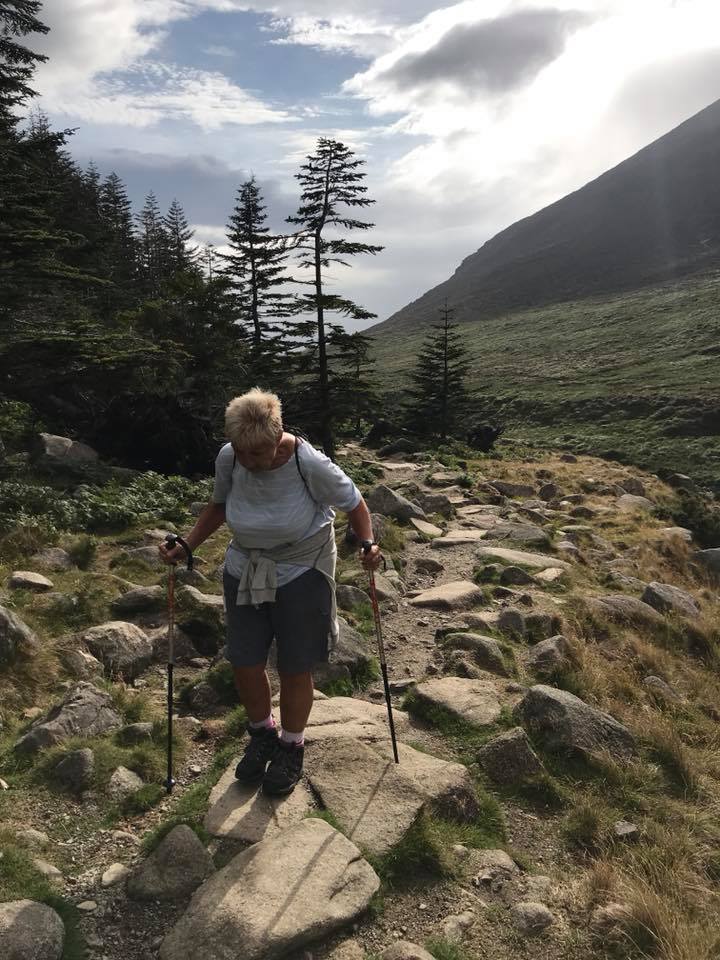
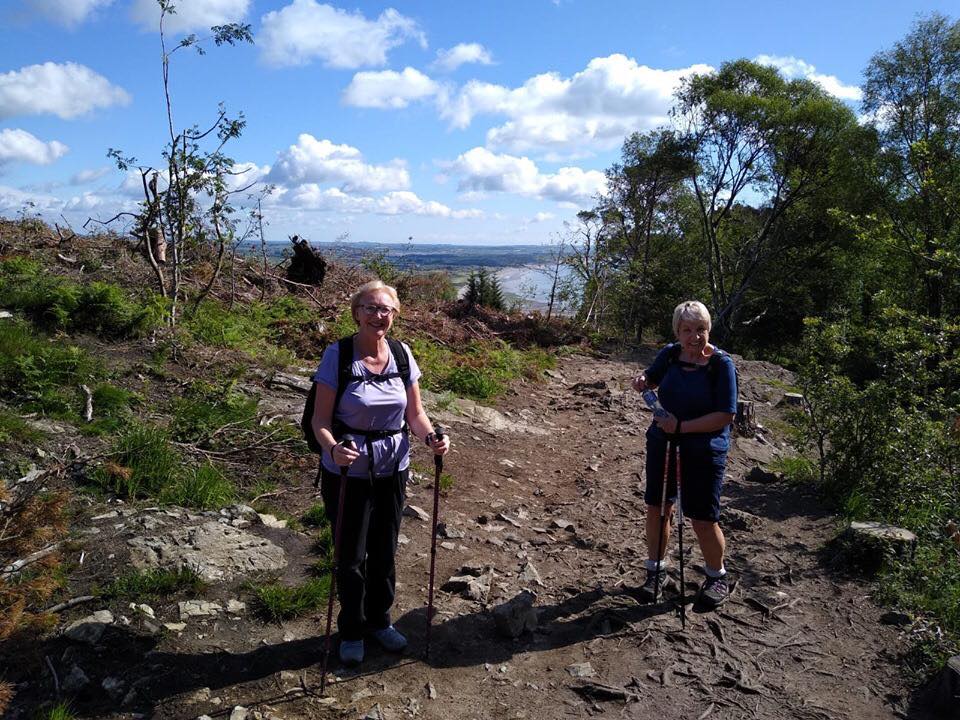
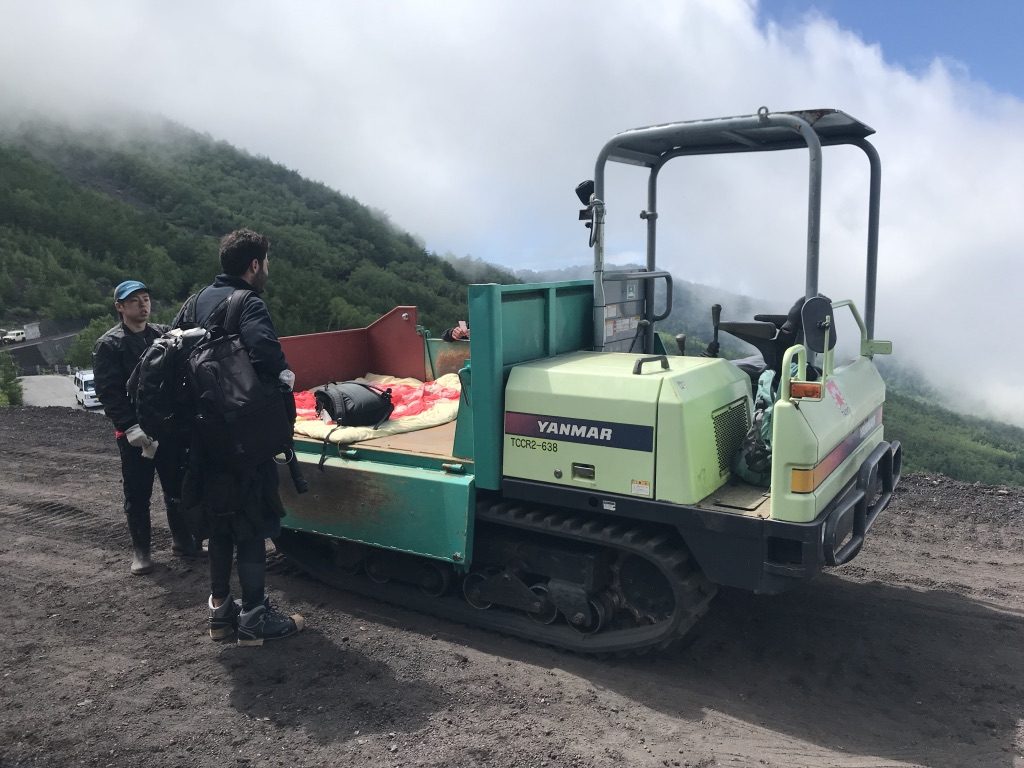
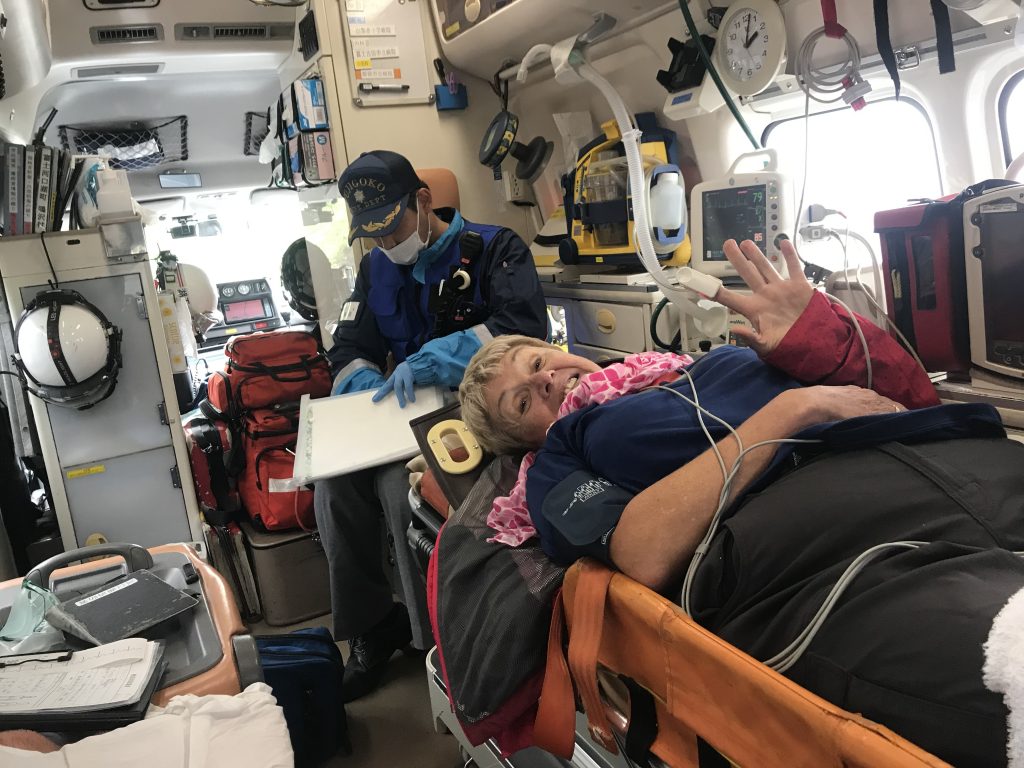
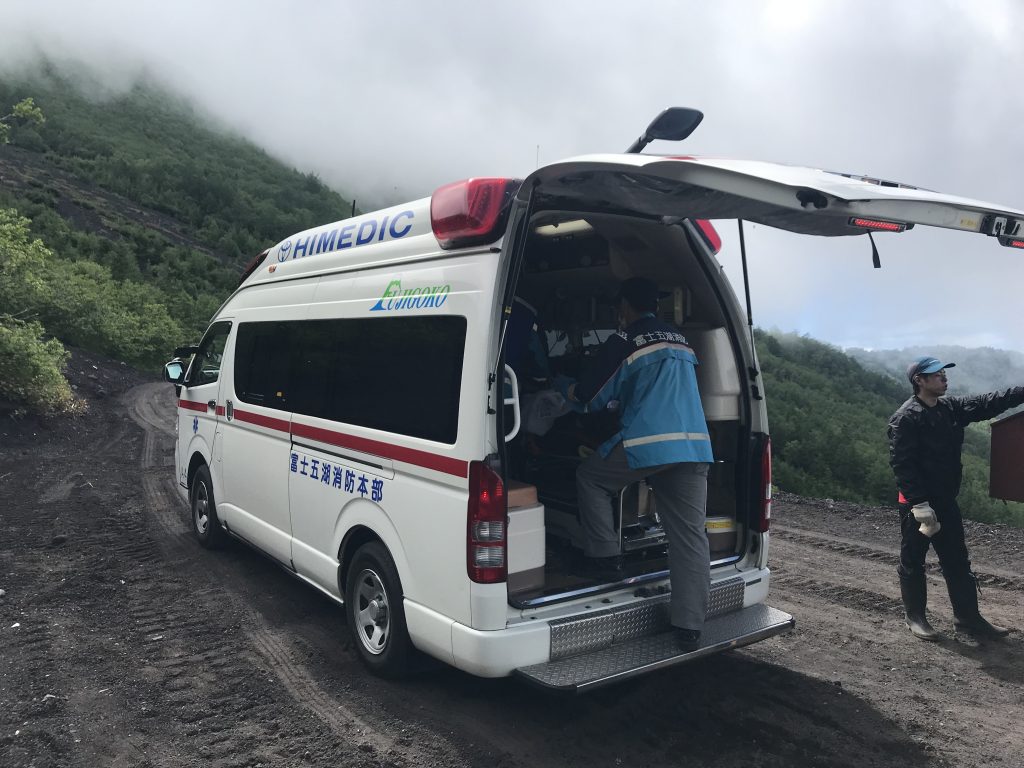


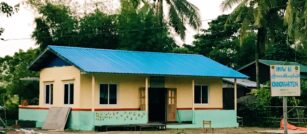
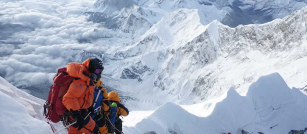
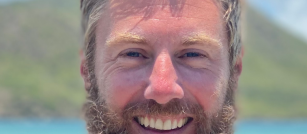
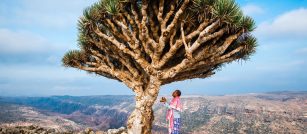
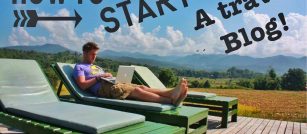
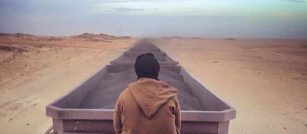
 As you know, blogging changed my life. I left Ireland broke, with no plan, with just a one-way ticket to Thailand
and no money. Since then, I started a blog, then a digital media company, I've made
more than $1,500,000 USD, bought 4 properties and visited (almost) every country in the world. And I did it all from my laptop as I
travel the world and live my dream. I talk about how I did it, and how you can do it too, in my COMPLETELY FREE
Ebook, all 20,000
words or so. Just finish the process by putting in your email below and I'll mail it right out to you immediately. No spam ever too, I promise!
As you know, blogging changed my life. I left Ireland broke, with no plan, with just a one-way ticket to Thailand
and no money. Since then, I started a blog, then a digital media company, I've made
more than $1,500,000 USD, bought 4 properties and visited (almost) every country in the world. And I did it all from my laptop as I
travel the world and live my dream. I talk about how I did it, and how you can do it too, in my COMPLETELY FREE
Ebook, all 20,000
words or so. Just finish the process by putting in your email below and I'll mail it right out to you immediately. No spam ever too, I promise!
